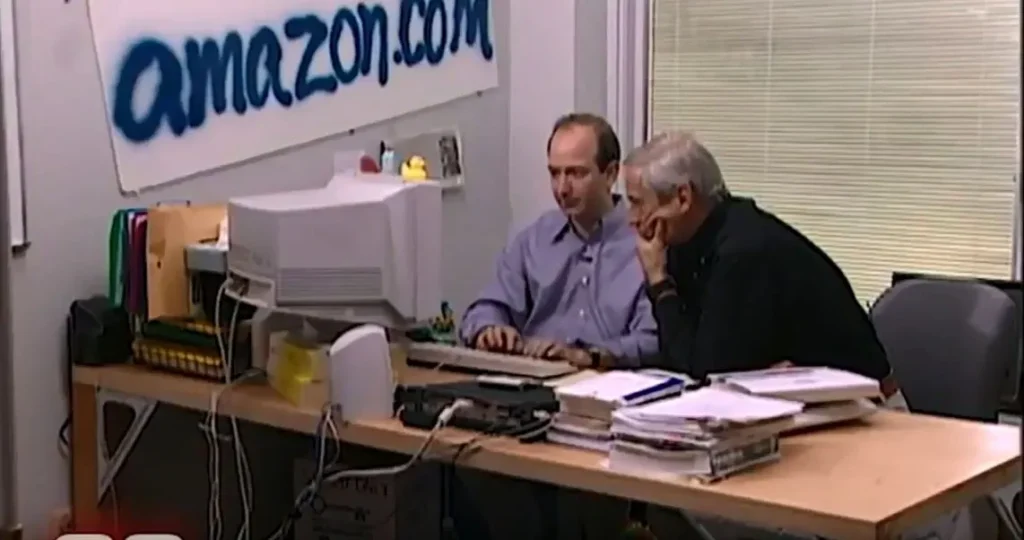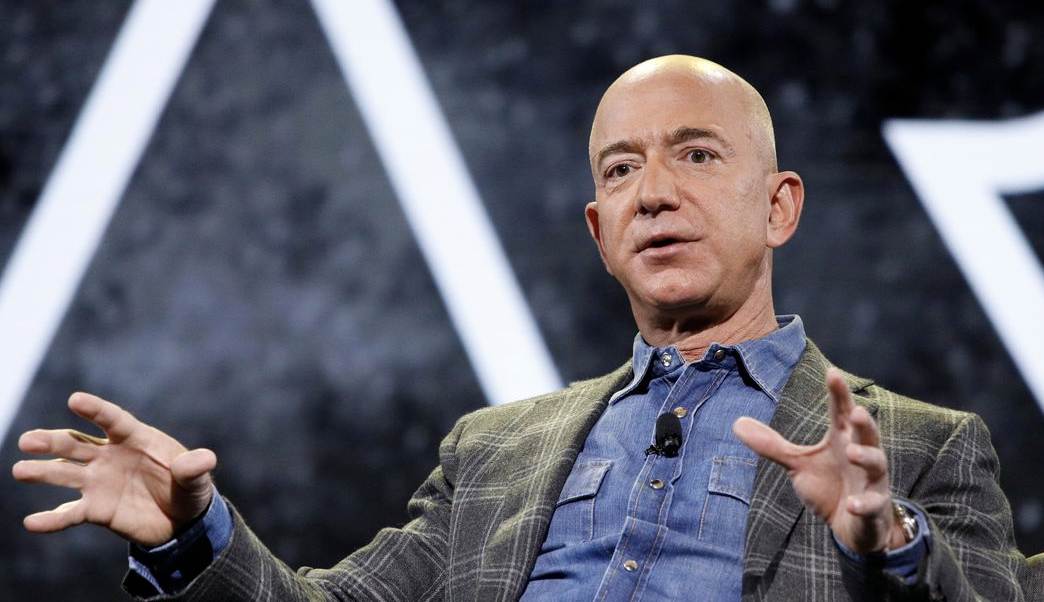Explore Amazon’s early days and Jeff Bezos’s strategic vision that transformed a small online bookseller into a global ecommerce and tech giant. Learn how Amazon navigated the dotcom bubble, faced challenges, and continues to influence the market today.
In a 2000 interview with Newsnight, Jeff Bezos, then the 36-year-old CEO of Amazon, famously referred to his company as “famously unprofitable.” This candid admission came during a critical period in Amazon’s early days, as the dotcom bubble began to burst. Despite Amazon’s impressive $1.6 billion in sales in 1999, it faced net losses of $720 million, resulting in a volatile share price that plummeted from $113 in December 1999 to $52 in June 2000.

The Dotcom Era and Amazon’s Strategy
Amazon’s early days were marked by the rapid rise of the dotcom boom in the late 1990s. Founded on July 5, 1994, in a garage in Bellevue, Washington, Amazon started as an online bookseller. By 1999, it had expanded its offerings to include electronics, toys, and appliances, boasting 17 million customers with a valuation 50 times its IPO value.
During the Newsnight interview, Bezos addressed concerns about Amazon’s profitability with a blend of humor and strategic insight. He explained that the company’s losses were the result of deliberate investments in infrastructure and a wide product selection to meet growing customer demand. This forward-thinking approach helped Amazon navigate the dotcom crash more effectively than many of its contemporaries.
Amazon’s Evolution and Bezos’s Vision

Amazon’s early days set the foundation for its remarkable growth. The company launched its marketplace in 2000, allowing third-party businesses to sell on its platform. This move significantly broadened Amazon’s product range and customer base. In 2005, Amazon Prime debuted, offering faster shipping and other benefits, which attracted millions of loyal customers. By 2023, Amazon’s net sales revenue had soared to $574.8 billion.
The company’s expansion into various sectors, including cloud computing (Amazon Web Services), streaming services, and grocery stores, exemplifies Bezos’s vision. Significant acquisitions, such as Whole Foods and Twitch Interactive, further solidified Amazon’s market dominance. AWS, in particular, became a powerhouse, driving substantial revenue and enabling businesses worldwide to leverage cloud technology.
Challenges and Criticisms
Despite its success, Amazon’s early days and subsequent growth have not been without criticism. The company has faced scrutiny over its labor practices and tax strategies. Strikes in its Coventry, UK warehouse and ongoing battles against unionization in the US highlight some of these issues. Workers have voiced concerns about working conditions, pay, and job security, leading to increased pressure on Amazon to improve its labor policies.

In 2022, Amazon became the first public company to lose $1 trillion in market value, underscoring its continued challenges. This significant loss was attributed to a combination of market conditions, increased competition, and internal issues. However, Amazon’s ability to bounce back from such setbacks has been a testament to its resilience and strategic foresight.
Bezos’s Continued Influence
Jeff Bezos, who stepped down as CEO in 2021, has since focused on ventures like Blue Origin, his aerospace company, and The Washington Post, which he purchased in 2013. He has also announced plans to donate a significant portion of his wealth to causes such as climate change and inequality. These philanthropic efforts, however, have faced scrutiny. Critics argue that Bezos’s charitable contributions are overshadowed by Amazon’s labor practices and environmental impact.
Despite stepping down as CEO, Bezos continues to exert significant influence over Amazon’s strategic direction. His long-term vision and leadership style have left an indelible mark on the company, shaping its culture and growth trajectory.
The Future of Amazon
As Amazon looks to the future, it faces both opportunities and challenges. The company is poised to continue its expansion into new markets and technologies, leveraging its vast resources and customer base. Innovations in AI, logistics, and retail technology are likely to drive Amazon’s next phase of growth.

However, Amazon must also address the criticisms and challenges that have emerged from its early days. Improving labor conditions, enhancing sustainability efforts, and navigating regulatory scrutiny will be crucial for maintaining its market position and reputation.
Amazon’s early days, marked by strategic losses and rapid growth, laid the groundwork for its transformation into a global ecommerce and tech giant. Jeff Bezos’s ambitious vision and innovative strategies have shaped Amazon’s journey from an online bookseller to a dominant force in various industries. Despite ongoing challenges and criticisms, Amazon’s impact on the global economy and daily life is undeniable.
For further insights and comprehensive content, please visit our homepage



